Burning Down the House: At Home with New York Novelist Jane Mendelsohn
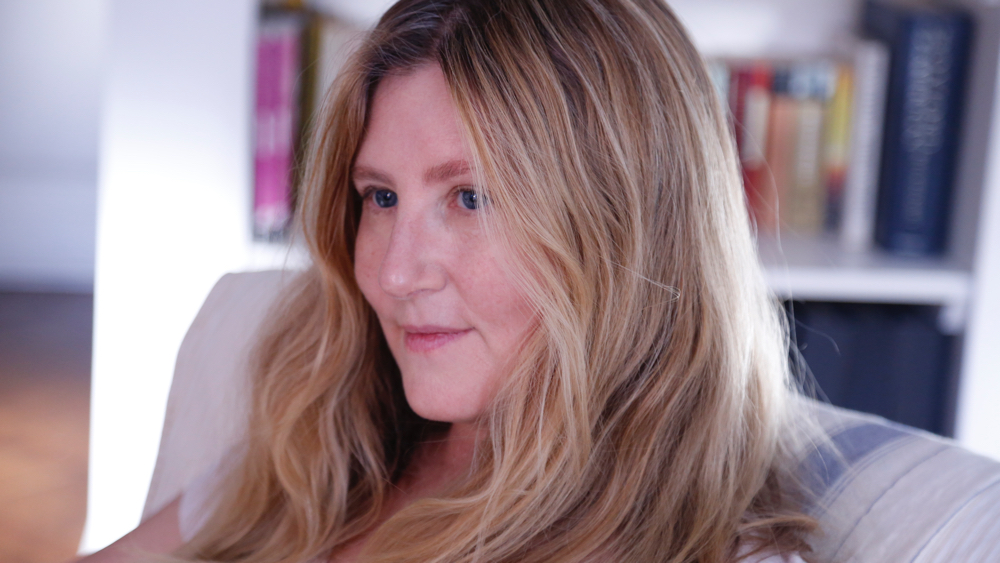
ABOVE: THE WRITER AND NOVELIST JANE MENDELSOHN AT HOME. PHOTOGRAPH BY NICK DAVIS.
In her mid-twenties, a few years after graduating from university, writer and novelist Jane Mendelsohn came across a photograph of Amelia Earhart, the American aviator, that shaped the course of her adult life to come. The writer became intrigued by an idea. What if Amelia Earhart might have survived — even if only for a little while — on a desert island? As she writes in the New York Times Sunday Review, “Perhaps this was because I felt at the time as if I were flying hopelessly around the world searching for land, longing for one of those islands of stability some of us keep looking for in our 20s, a braceleted wrist held up to the face, hand shielding our eyes from the harsh sun of adulthood, not realizing that we will have to build that island for ourselves.”
Inspired by Earhart’s daring spirit to face the unknown, Jane began her adult life by taking on the risk of writing a novel — I Was Amelia Earhart. It went on to become an international bestseller and short listed for the Orange Prize in 1996 — not bad for someone who had never even written a short story before. From there she went on to “build her island”, publishing several more books to critical acclaim, getting married and starting a family. Please help us to congratulate her on launching her fourth book today — Burning Down the House — a gripping tale about a wealthy New York family that is forced to confront itself with very contemporary twenty-first century problems.
We recently visited Jane at home in Gramercy Park from where she works to talk about her favorite subject — women as the heroines of their own lives.
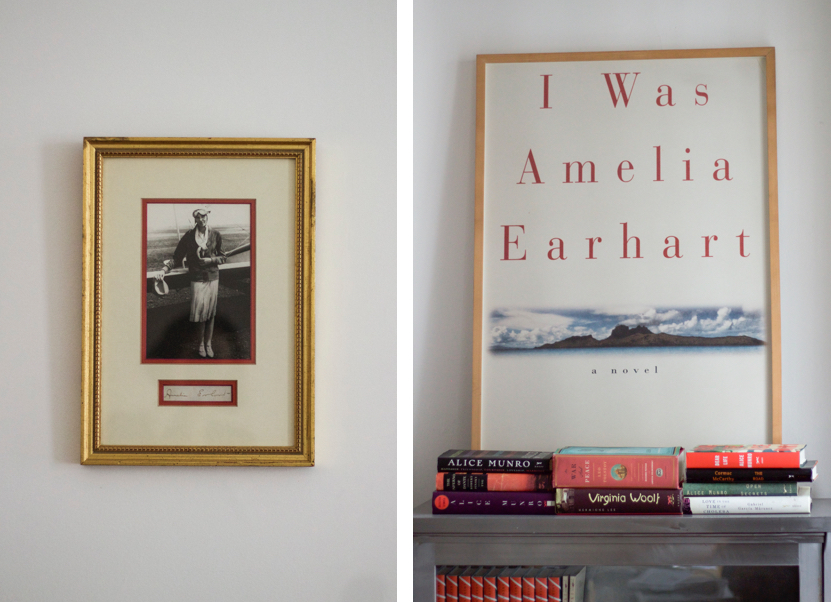
ABOVE L: A PHOTOGRAPH OF AMELIA EARHART WITH THE PILOT’S SIGNATURE BELOW WAS A WEDDING GIFT FROM A FRIEND. ABOVE R: A POSTER OF THE COVER OF I WAS AMELIA EARHART SITS ON TOP OF A BOOKCASE, FILLED WITH JANE’S LITERARY HEROES, IN HER OFFICE.
FF – You write very strong and memorable female characters into all of your books. How have the changes and developments in your life affected the way you view and write about your female characters?
JM – This is a huge question. I’d say my interest in women’s lives and stories has only deepened as I’ve grown and changed through marriage and children. I’m as interested as I ever was in how women can be the heroines of their own lives. And, by extension, how everyone can do that, or at least try— to live the most engaged, fully conscious and meaningful life possible.
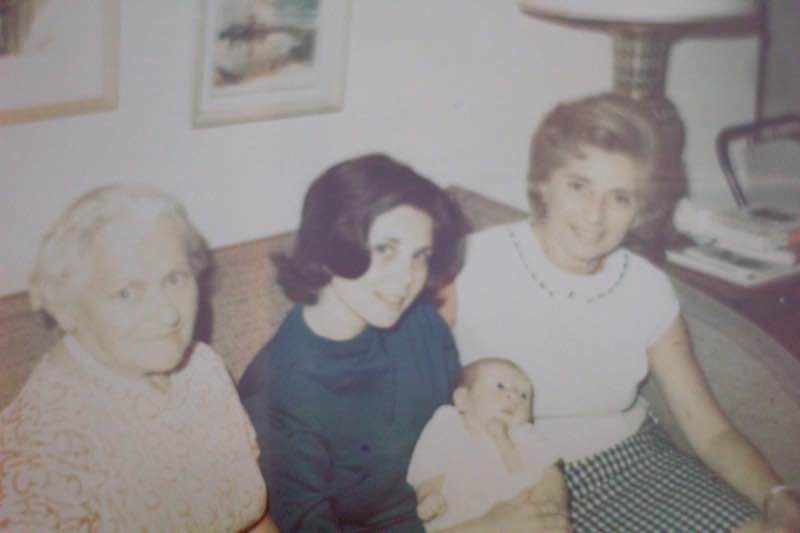
ABOVE: A FAMILY PORTRAIT OF 4 GENERATIONS OF WOMEN. FROM L-R; THE AUTHOR’S GREAT GRANDMOTHER, HER MOTHER, THE AUTHOR HERSELF AND HER GRANDMOTHER.
FF – In your book “American Music”, you write about four generations of women. Tell us about the women in your family.
JM – The women in my family are very independent-minded people who keep life interesting. My mother is an art historian and I spent much of my childhood in Italy and in museums. My grandmother loved to paint and read and was always learning. She had a quick mind up until the day she died at 95. She woke up every morning and smoked a cigarette while she did the crossword puzzle. She was always thinking up adventurous things to do with her group of friends. Her best friend, Buddy, called her “Magellan”. She’d say to my grandmother (Evelyn): “So what are we doing today, Magellan?” They fully embraced being the heroines of their own lives.
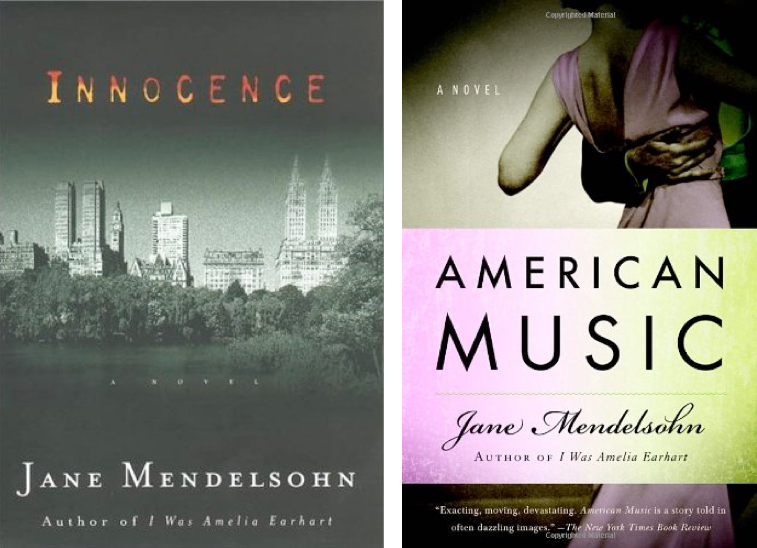
ABOVE L: JANE’S SECOND BOOK INNOCENCE, PUBLISHED IN 2000. ABOVE R: JANE’S THIRD BOOK AMERICAN MUSIC, PUBLISHED IN 2011.
FF – Teenage girls play a critical role in your writing. Tell us more about your teenage heroines in “Innocence” and “Burning Down the House”? What do you feel is important about them and their stories?
JM – I have two daughters and I often think about the struggles teenagers today face, whatever their backgrounds. Adolescence is such an interesting and challenging time of life and I remember it well. Teenagers are dealing with so much and are often given such a hard time. I’m amazed by what’s thrown at them, internally and externally, and their journeys to adulthood seem to me to be a microcosm of the intense transformations we all go through at various points in our lives. And maybe the heightened emotions, the almost psychotic state of adolescence, fascinates me because I like to use heightened language and storytelling to get across certain feelings and ideas.
When I think back on the inspiration for my latest book — Burning Down the House — I realise that in many ways it grew out of fear, and a desire to confront my fears. I think we’re living in a time characterised by a lot of fear and I felt a need to address that in some way. I’m always interested in women’s stories and now as a mother, with what lies ahead for my daughters. I unfurled a nightmare scenario for Poppy, the teenager at the heart of the book — the nightmare of what could happen to a daughter if her mother weren’t around to protect her. The fear any mother, any parent, has in today’s world. I suppose I wanted to play out that fear so that I could look at it and hold it, face it, and move through it.
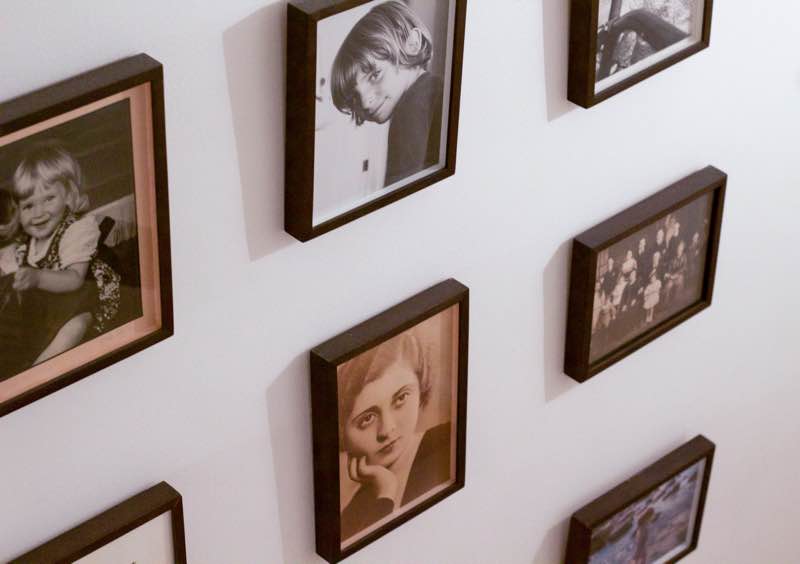
ABOVE: A WALL OF FAMILY PHOTOGRAPHS WITH THE AUTHOR’S GRANDMOTHER, EVELYN, IN THE MIDDLE.
FF – In your New York Sunday Review op-ed piece, you write passionately about women in the 21st century. Please tell us more.
JM – It is being said more frequently, more loudly and with more evidence and conviction that the 21st century is the century of women. Research tells us that by empowering women in developing countries we can end poverty, starvation and war. These are ambitious goals, perhaps unreachable, but clearly worth attempting. Organizations like Women, War and Peace, Girls Rising and the Girl Effect have information that explain more fully about why giving women and especially girls the help they need — leadership development, education, violence prevention and economic empowerment — can change the world.
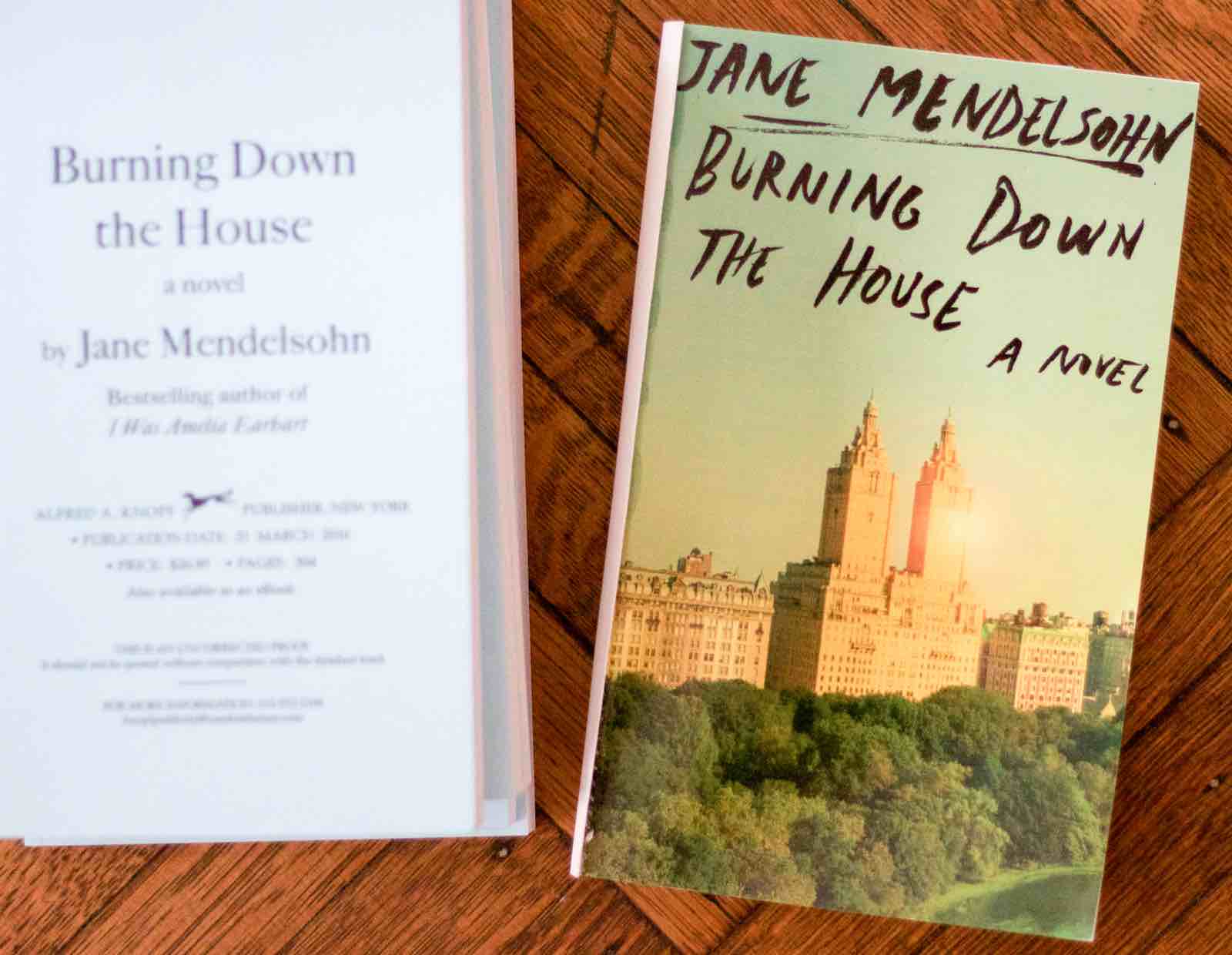
ABOVE: FOR THE LAUNCH OF HER LATEST BOOK “BURNING DOWN THE HOUSE”, JANE WILL BE DOING READINGS IN MANHATTAN, BROOKLYN, MADISON, CT AND WASHINGTON D.C. FOR MORE DETAILS, SEE HERE.
FF – A central plot line of Burning Down the House revolves around the sex trade. How did you become interested in this often considered taboo subject?
JM – I became aware of the issue of sex-trafficking in New York City when a friend invited me to become involved in an organization called Sanctuary for Families, which began as a service for victims of domestic abuse and has several shelters around the city. As I learned more about them, I discovered that they were expanding their reach to deal with victims of sex-trafficking after finding that many of their population were both victims of domestic abuse and sex trafficking, and that the problem was right here, on the streets of New York City. This was shocking to me and what I learned struck me on many levels—as a citizen, a woman, a mother, and a New Yorker. The stories are harrowing. The numbers are great. And the problem seems to intersect with so many of today’s issues — globalization, violence, the vast social inequities that disturb so many of us. They are difficult problems with no easy answers, but are very relevant to all of us.
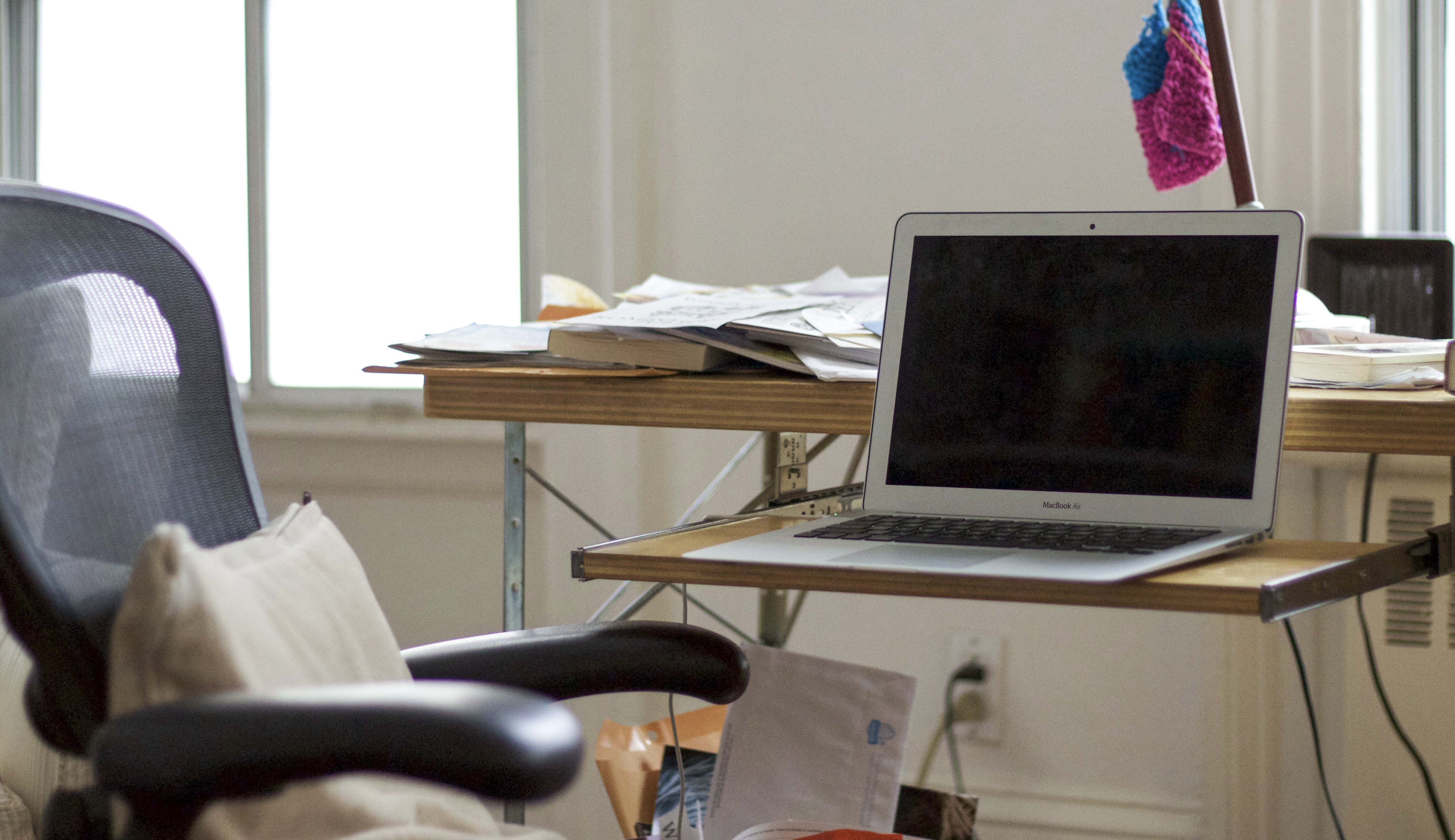
ABOVE: THE WRITER’S DESK.
FF: Tell us about what it’s like to work from home.
JM: For many, many years I worked at a desk in the living room. Then we moved and I got an office at home, where I work on that same desk. My office still doesn’t really have a door and I like it that way. My daughters come in and sit on the couch and chat with me after school. Or do their homework in here while I work. It hasn’t always been easy to juggle— not at all— I got much less writing done when they were younger— but we’ve found a really good rhythm.
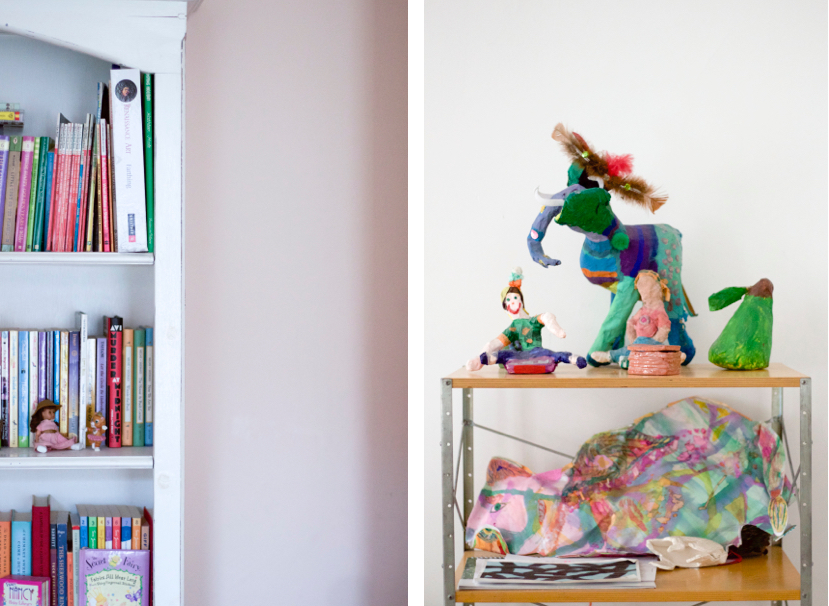
ABOVE L: LIKE MOTHER, LIKE DAUGHTER — BOOKS FILL THE SHELVES IN ONE OF THE GIRL’S ROOMS. ABOVE R: A DISPLAY OF HER DAUGHTERS’ ARTWORK IN JANE’S OFFICE.
FF: Any Wardrobe Wisdom?
JM – My friend Ira Sachs made a film called Love is Strange and in it Marisa Tomei played a novelist who works at home. He asked if she could call me to ask me questions about working as a novelist at home. I felt my answers about how I dressed were particularly boring. Jeans, t-shirt, sweater. Sometimes the same jeans and sweater for days in a row— much to my daughters’ dismay. On my feet, I usually wear black sneakers or black ankle boots. I have a weakness for nice black ankle boots.
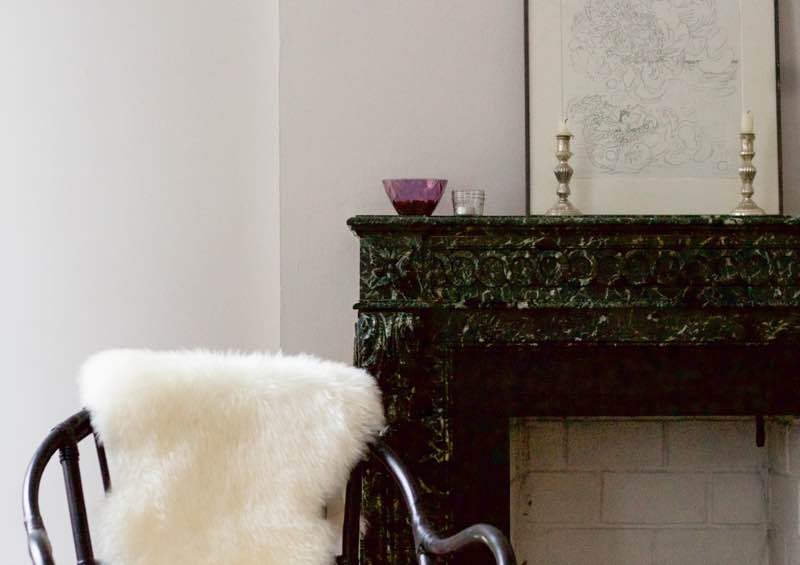
ABOVE: THE DRAWING ABOVE THE MANTEL IS BY ARTIST MELISSA MARKS, A CLOSE CHILDHOOD FRIEND SINCE THE 2ND GRADE.
FF – What’s in your Prescient Pantry?
JM – I always have pureed tomatoes with nothing in them (no sugar, no basil), garlic, onions, pasta, and sea salt. I have some sea salt from this past summer in Maine that I’m still using. And honey from Maine. And we seem to eat a lot of fruit in this house. Bananas, blueberries, and those pretty satsuma oranges with the stems and leaves.
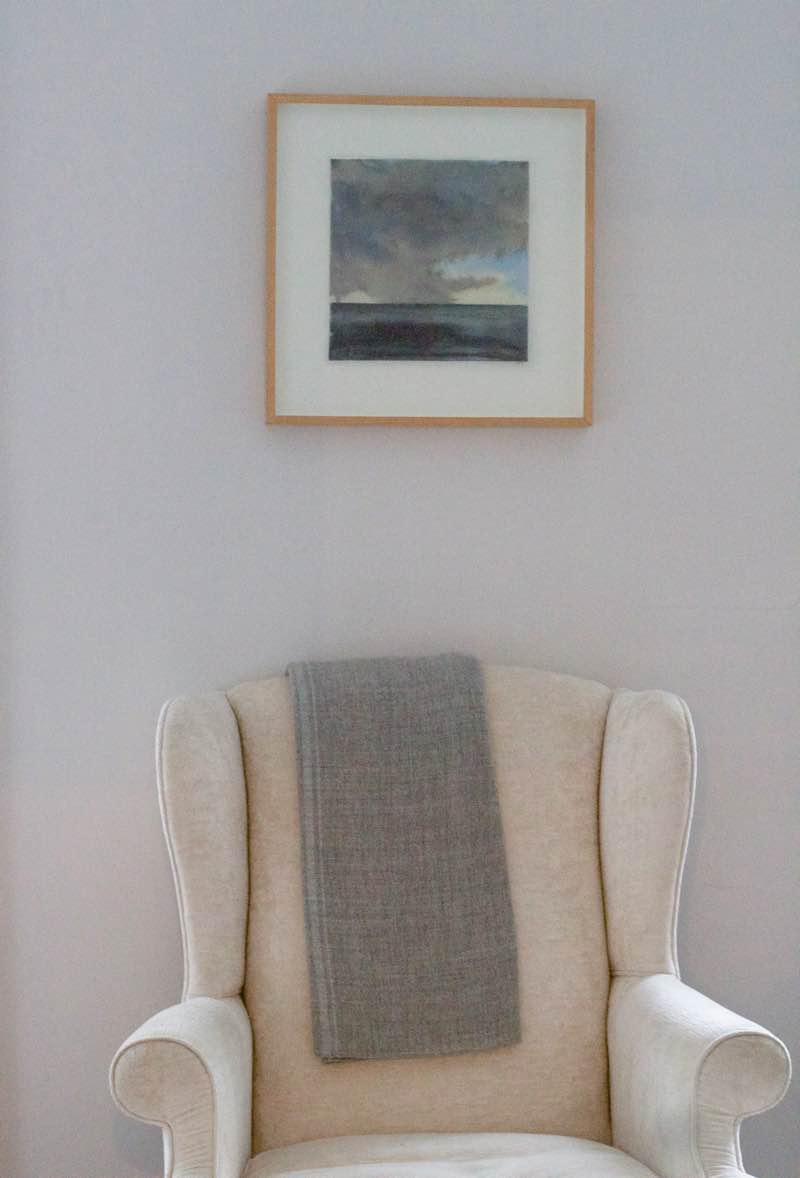
ABOVE: THE WATERCOLOUR ABOVE THE WING CHAIR IS BY ISABEL BIGELOW. “I FIND ITS SIMULTANEOUSLY STORMY/CALM QUALITY VERY APPEALING,” JANE SAYS. “YOU CAN’T TELL WHETHER IT’S JUST BEFORE A STORM OR JUST AFTER AND THAT TENSION AND AMBIGUITY ARE INTERESTING.
FF – What do you look for in a book?
JM – I like a book that takes you for a ride, an experience, where the story and the writing together create an extra dimension, a very specific journey that puts you in touch with the writer’s sensibility and states of feeling. I find reading a book to be a meeting of minds—the reader’s and the writer’s. It’s an intimate experience.
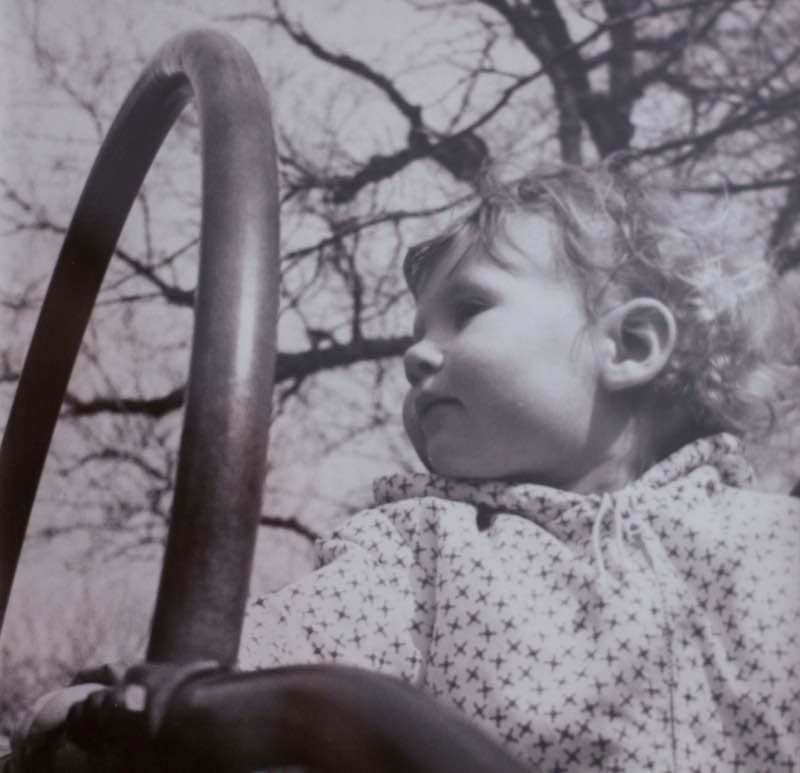
ABOVE: A CHILDHOOD PHOTO OF THE AUTHOR IN A NEW YORK CITY PLAYGROUND.
FF – What’s next?
JM – I’m researching a new novel, but it’s a little early to talk about it! What I’m actively involved in right now is a musical adaptation of my last novel, American Music, in collaboration with the American Repertory Theater in Cambridge. I’m working on the book and the lyrics, and as that project developed, art began imitating life: I was finishing up Burning Down the House, in which a character directs a stage musical, so I had some first hand experience of that world. It’s very exciting to be working with some amazing people, but I’m also looking forward to the solitude of working on a new novel. I like the balance of the two.
N.B.: For the launch of her latest book Burning Down the House, Jane will be doing the following readings — March 15 in Manhattan, March 18 in Brooklyn, March 18 in Madison, CT., April 6 in Washington D.C. and May 4 in New York. For more details, see here.
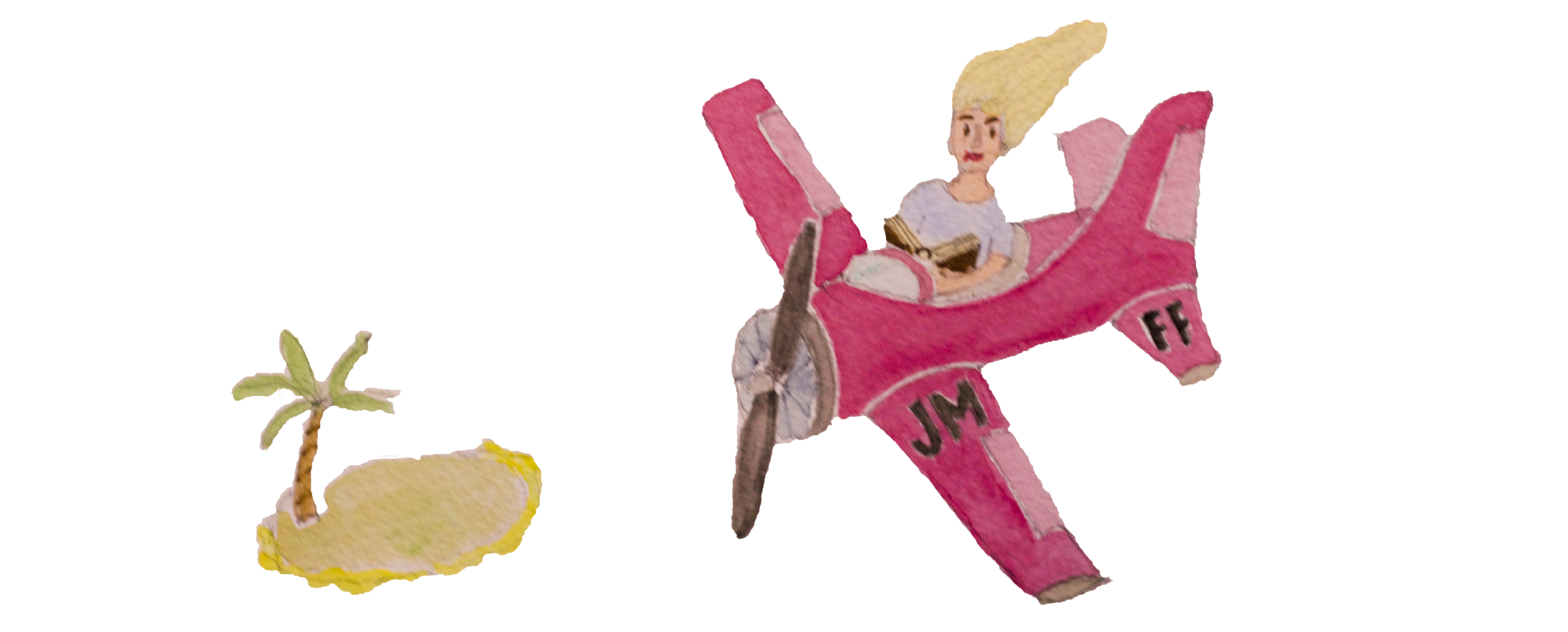
A Fabulous Fabster thank you to Jane Mendelsohn!
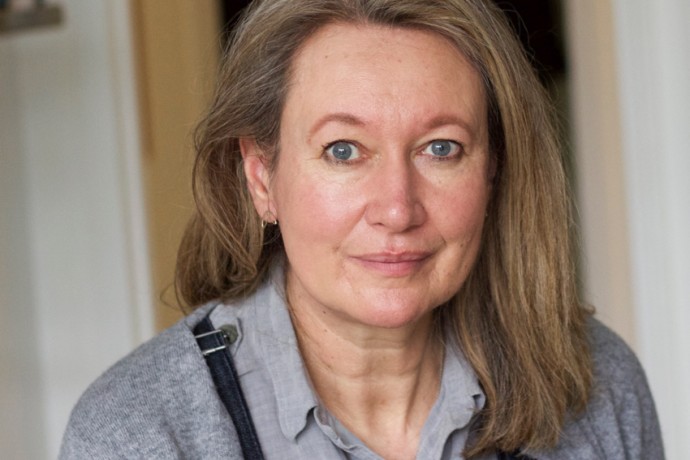
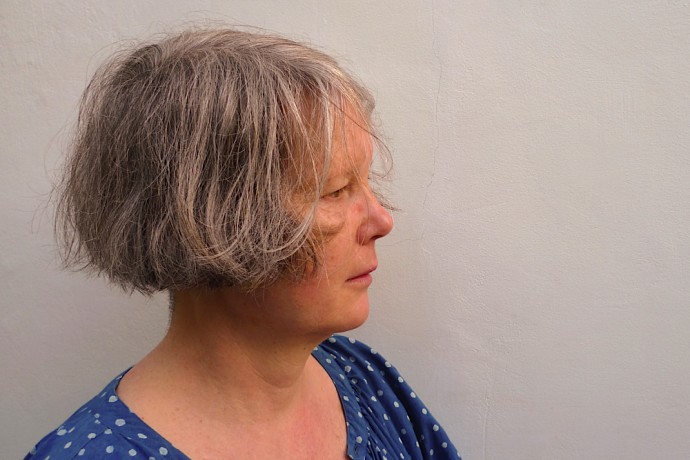
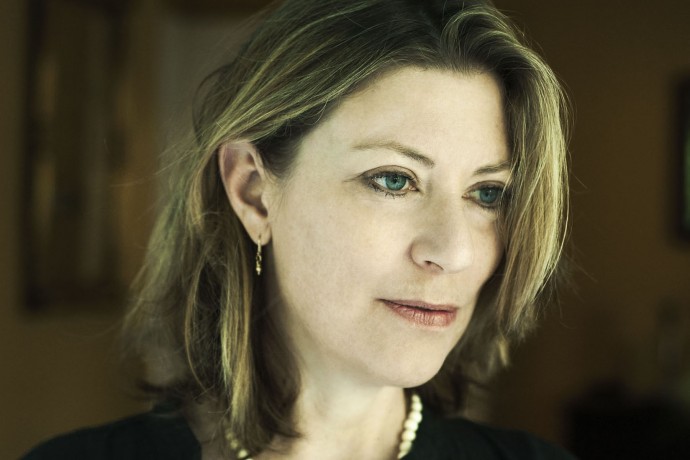
Fascinating glimpse into this talented writer’s life. Thank you Christne xx